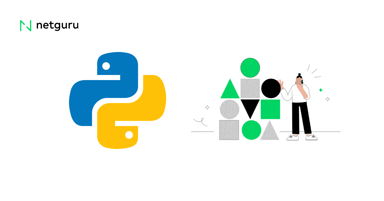Top 7 differences between Python and Java [2022 Update]

Both languages have their own characteristics, resulting in some major differences between them. In this article, we will explore the top differences between Python and Java.
What is Java?
Java is a programming language that was released in 1995. It is well known for being a strongly object-oriented programming language. In fact, for over 20 years it has been in the top three most popular programming languages, and for a long time it was the most popular one.
Java is a general-purpose programming language for complex applications, big data, Android, and web development. One of the reasons for it becoming popular is being platform-independent, which wasn't a common feature in the 90s. It is used by big companies like Google, Instagram, Spotify, and Microsoft.
What is Python?
Python was created in 1993 and gained its popularity mainly because of its simplicity. It was developed with code readability as a principle. Python is a general-purpose and object-oriented programming language, but it is not strictly object-oriented.
Thanks to Python’s elasticity, it can be used in different programming styles, such as functional or procedural programming. Thanks to this, Python is commonly used in many different domains such as data science, machine learning, and web development. Python is used by big companies, for example: Google, Facebook, Instagram, Spotify, and Dropbox.
Pros and cons of Python and Java
Performance
Java is faster than Python, mainly because it is a statically typed and compiled language, while Python is a dynamically typed and interpreted language.
Interpreted languages execute code on the fly, line by line, while compiled languages need to be translated into machine-language instructions before we are able to run them. In compiled languages, errors make it impossible to run code, but in interpreted languages, debugging occurs at run-time. So, in compiled languages, compilation is needed before testing and it takes additional time.
Interpreted languages are usually more flexible than compiled languages, but the drawback is slower execution speed.
Another mentioned reason for Java being faster is static typing. This means that when creating a variable, you need to declare its data type. As Python is a dynamically typed language, data types do not need to be declared. Static typing makes the compiler aware of data types that are in use, and it usually makes code execution faster because of more optimized machine code produced by the compiler.
To sum it up, Python allows for quick iterative development without the need to recompile the project, but it runs slower. On the other hand, Java has to be compiled beforehand, but the resulting program executes faster.
Development speed
As mentioned earlier, in Python there is no need to define data types of variables. This can increase development speed in Python.
In recent years, Python is getting better support for type hints and they are used more often by developers. It makes Python more similar to Java, and the developer has to think about the data type of the variable and how that variable will be used later. But if we want to develop a working prototype as quickly as possible, we don't need to use type hints.
Python code is more concise and clean than Java. In Python, there are fewer things to take care of. Thanks to this, it is great for making prototypes and small projects. Developers can quickly deliver a basic version of a product that can be used by clients. Then, we can quickly gather feedback about the product and work on improving it. This is called the minimum viable product (MVP), which is the core of the Agile Methodology.
Easy to learn
Python is well known for being easy to learn, especially thanks to its English-like syntax. As a matter of fact, among popular languages, it is one of the easiest to learn. This definitely contributes to its popularity. It is often used by people who are not software developers, for example: system admins or data analysts.
Java and Python are high-level languages, but Java is closer to low-level languages. This means that while using it we have more control, but we need to care about more things. This is one of the reasons why learning Java is harder than learning Python.
Android Development
Even if there are ways to develop Android applications with Python, using for example: BeeWare or Chaquopy, Java is definitely a better choice for this. Java is one of the best programming languages for Android app development. It has a large community and many libraries, so when encountering a problem, the solution should be easy to find.
Machine learning
Python is the most popular language used for machine learning. There are several reasons for it. Python is clear, simple, and offers great readability. This is a great advantage when creating complex logics for machine learning. Developers do not need to focus on complexities of language and can use all resources to work on machine learning logic. This is also possible because code written in Python is concise, in contrast to Java. That means developers can quickly achieve what they want without writing much code.
Another reason for Python being great for machine learning is the great variety of libraries to choose from and the large community of people using Python for machine learning. This means excellent support for developers.
Java is also used for machine learning and is perceived as a good option, but not as good as Python, mainly because it is more difficult to read and understand.
Stability
Java is a more stable language than Python. Thanks to being a compiled language, many problems with code can be found while compiling. Of course, this does not include purely logical mistakes in code, but overall this leads to fewer problems and more stable code. Java’s stability is the main reason why it is widely used in business.
This does not mean that Python is an unstable language. It is also used by large companies and in big projects, but it is not as stable as Java.
Scalability
Java is better than Python in terms of scalability. This means that it is better suited for large applications, also for applications that are now small, but we anticipate will grow. Java is better for large applications, mainly because of better performance, which was described earlier in the article. Another reason for good scalability is a better use of hardware resources thanks to Java multithreading. Python multithreading support is limited because of Global Interpreter Lock while Java supports executing processes simultaneously on many threads.
Conclusions
When deciding on technology for your next project you should think about your business needs and the projects' characteristics. Python and Java have their pros and cons and are suitable for development of products of different sizes and level of complexity. If your project will involve machine learning, Python might be a better solution because of it is great for creating complex logics. Moreover, Python secures fast development as there is no need to define data types of variables. However, you might choose Java, if you plan to build or scale a large application.















-873149-edited.jpg?width=50&height=50&name=Tomaszuk%20Daniel%201%20(2)-873149-edited.jpg)





